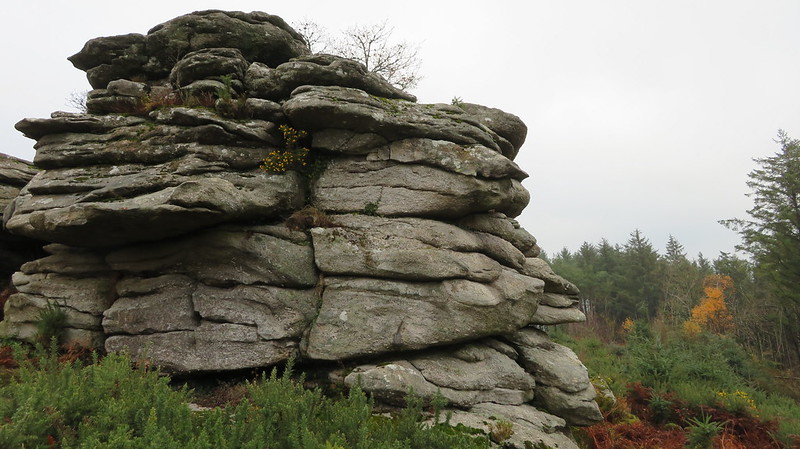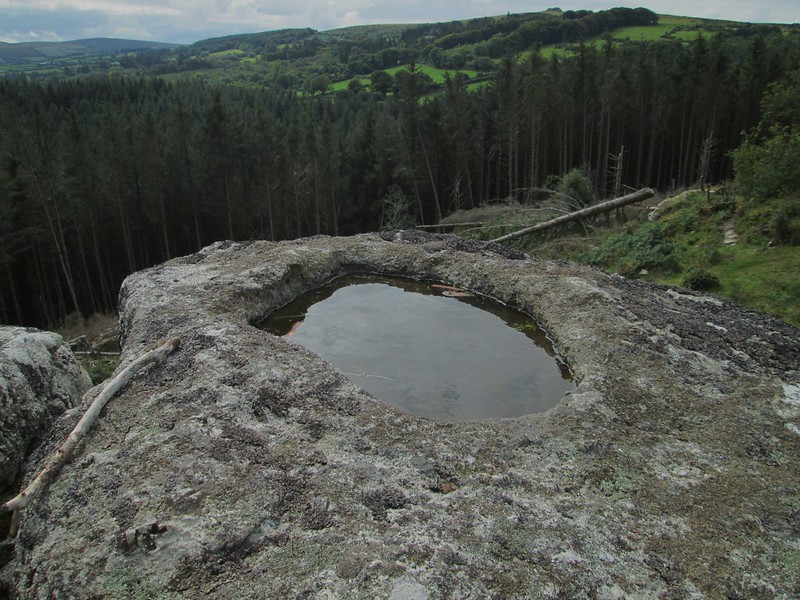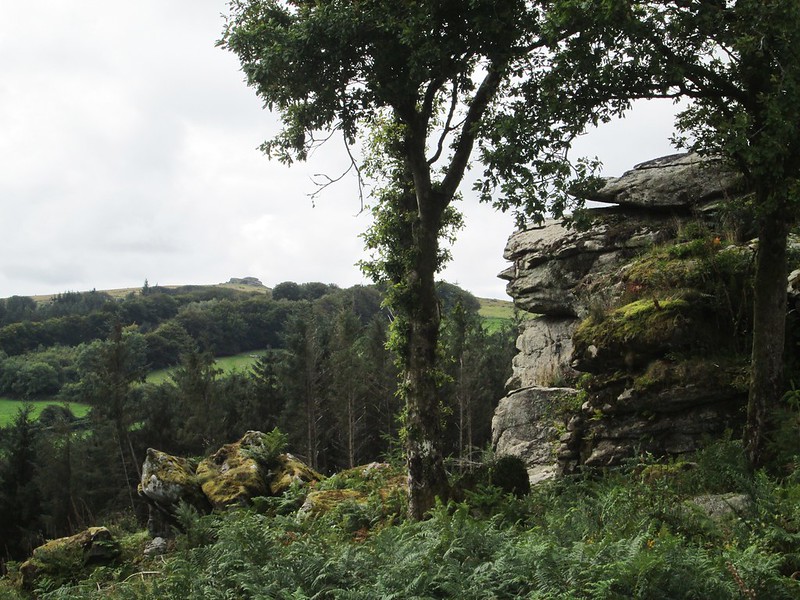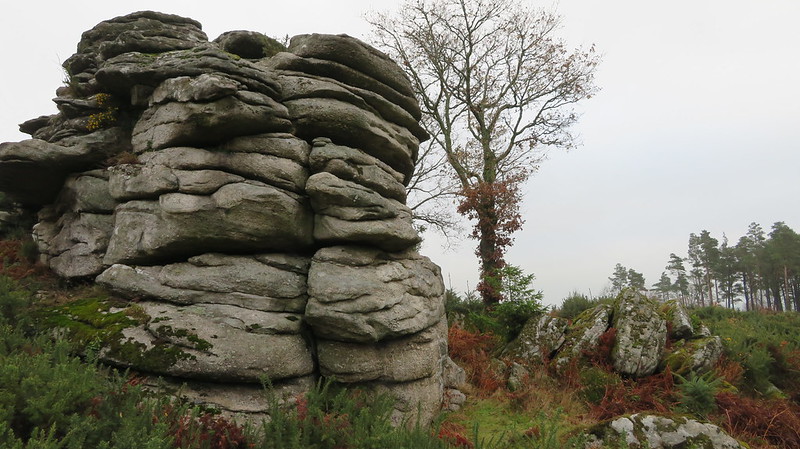TORS OF DARTMOOR
a database of both lesser- & well-known rocks and outcrops
Gidleigh TorPrinsep's Folly, Princep's Folly
 William Crossing (WC) first describes this tor at the turn of 20th Century in the charming booklet entitled The Teign from Moor to Sea explaining that the rockpile is also known as 'Princep's Folly' on account of a Mr Princep erecting a house on the crest of the hill close to the tor in 1848. But according to the author the abode "was reared only to be suffered to decay" and "was very soon deserted". However, writing in 1905 in Gems in a Granite Setting where he describes the tor as having "several fantastically shaped piles of rock" we learn that Mr Thomas Levett-Prinsep (the 'c' has become an 's') built the house on two and a half acres of land adjoining Gidleigh Tor, that he had acquired in 1846 on a 99-year lease from his friend the Reverend Arthur Whipham who was the rector of Gidleigh church at the time, but shortly after its completion and before he could actually occupy the house Mr Levett-Prinsep died suddenly in December 1849 whilst crossing Teignmouth harbour in his boat. Tim Jenkinson (2017) gives more details on his life and outlines his Staffordshire origins and that after the early death of his first wife Margaret Monro, Mr Levett-Prinsep remarried in 1838 to Caroline Mary Templer daughter of the Reverend John James Templer of Teigngrace in Devon and the Dartmoor connection starts to emerge.  Situated about half a mile to the south of the village the highest part of Gidleigh Tor is set above the wood with fine views over the tree line south eastward to Easdon and Hameldown with Kes Tor visible on the near south horizon. The uppermost and fissured outcrop is particularly impressive when viewed from below and atop the flat summit slabs are at least four fine rock basins, one of these large and oval and another small and circular. Both were full of rainwater on a recent visit. Close by there is the ruin of curious little octagonal building with a pointed arch doorway but it is unclear as to whether this relates to the original house.  Sadly, there have been access restrictions imposed on this tor in recent years but around 2014 people were allowed back into the area despite the main Mariner's Way running close by. There are footpaths darting all through the wooded sections here, and in 2017 Tim Jenkinson gave directions on how best to reach the main tor "Access to this area has only been renewed in the past three years or so, and the growth of trees and vegetation has obscured much of the tor, but it can now be reached relatively easily by following a section of the Mariner's Way that leads south from the road about 100 metres uphill from Gidleigh Cross in the village. Keep on into the wood and then branch right at the clearing taking the path westward to see the upper pile." Whilst access is still afforded visitors must observe all signage whilst logging works are taking place. 
| ||||||||||||||||||||||||||||